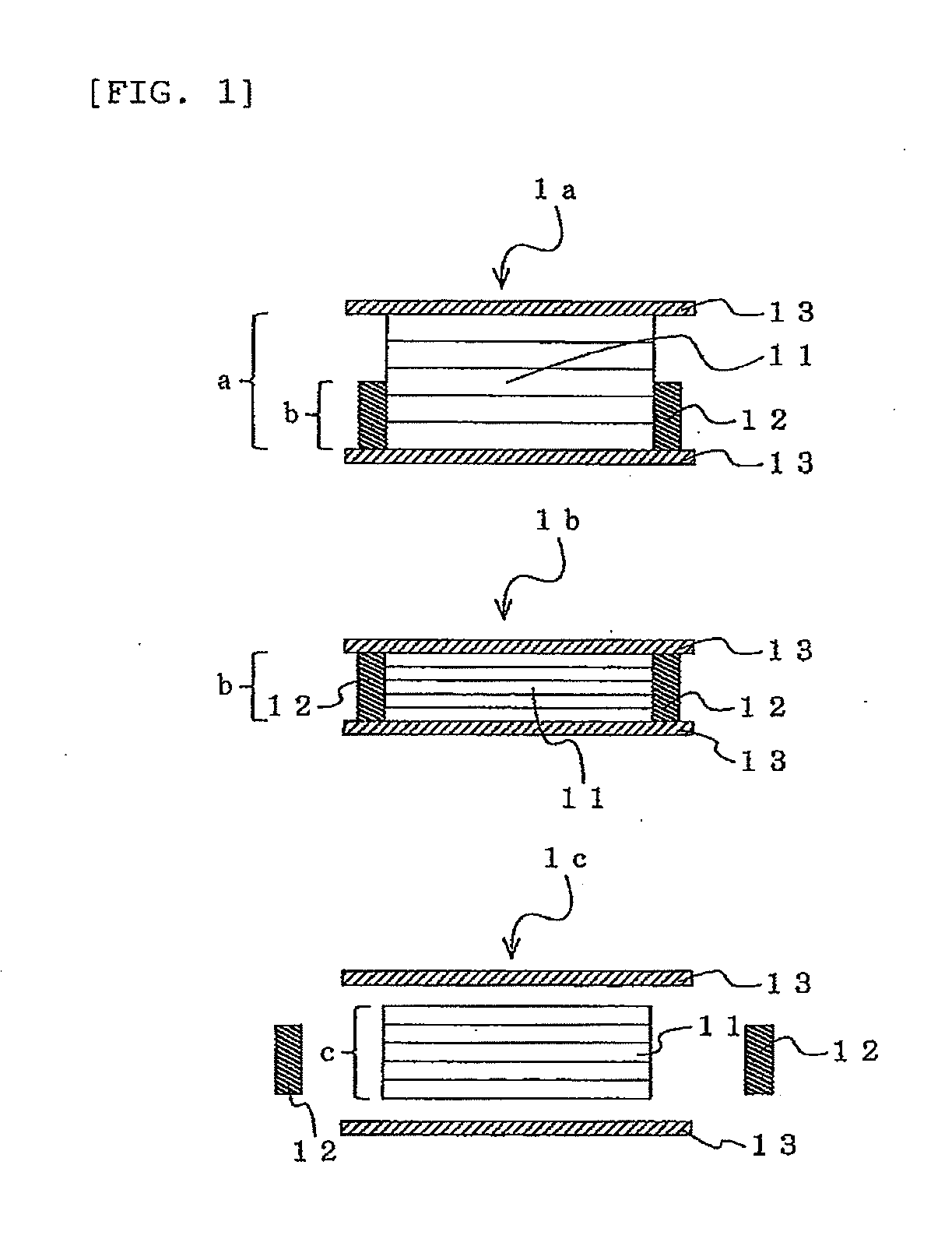Cross-linked resin foam and process for producing the same
a cross-linked resin and foam technology, applied in the field of resin foam, can solve the problems of poor strength of foam, inferior sealing properties, poor expansion ratio of foam, etc., and achieve the effects of high expansion ratio, high strength, flexibility, and cushioning properties
- Summary
- Abstract
- Description
- Claims
- Application Information
AI Technical Summary
Benefits of technology
Problems solved by technology
Method used
Image
Examples
example 1
[0102]In a kneading machine equipped with blades of roller type (trade name “LABO PLASTOMILL” supplied by Toyo Seiki Seisaku-Sho, Ltd.), 100 parts by weight of an acrylic elastomer (trade name “Rheocoat R-1020” supplied by Toray Coatex Co., Ltd.) was kneaded at a temperature of 80° C.; and 100 parts by weight of a multifunctional acrylate (trade name “M309” supplied by Toagosei Co., Ltd.) was added thereto, followed by kneading at a temperature of 80° C. The acrylic elastomer included units derived from butyl acrylate (BA), acrylonitrile (AN), and acrylic acid (AA) and had a composition (by weight) of BA:AN:AA of 85:15:2. Next, 4 parts by weight of an isocyanurate-based hexamethylene diisocyanate cyclic trimer (trade name “CORONATE HX” supplied by Nippon Polyurethane Industry Co., Ltd.) as a thermal crosslinking agent was added, followed by kneading at a temperature of 80° C.
[0103]The resulting kneadate was combined with 3 parts by weight of bis(2,4,6-trimethylbenzoyl)-phenylphosphi...
example 2
[0108]A foam was prepared by the procedure of Example 1, except for using, instead of the acrylic elastomer (trade name “Rheocoat R-1020” supplied by Toray Coatex Co., Ltd.), 100 parts by weight of a polymer including units derived from butyl acrylate (BA), acrylonitrile (AN), and acrylic acid (AA) and corresponding to the acrylic elastomer, except using acrylic acid in an amount of 2 times in polymerization, and having a composition (by weight) of BA:AN:AA of 85:15:4.
[0109]The resulting foam had an expansion ratio of 31 times and did not suffer from shrinkage before and after the ultraviolet ray irradiation.
example 3
[0110]A foam was prepared by the procedure of Example 1, except for using, instead of the acrylic elastomer (trade name “Rheocoat R-1020” supplied by Toray Coatex Co., Ltd.), 100 parts by weight of a polymer including units derived from butyl acrylate (BA), acrylonitrile (AN), and acrylic acid (AA) and corresponding to the acrylic elastomer, except using acrylic acid in an amount of 3 times in polymerization, and having a composition (by weight) of BA:AN:AA of 85:15:6.
[0111]The resulting foam had an expansion ratio of 28 times and did not suffer from shrinkage before and after the ultraviolet ray irradiation.
PUM
| Property | Measurement | Unit |
|---|---|---|
| elongational viscosity | aaaaa | aaaaa |
| density | aaaaa | aaaaa |
| glass transition temperature | aaaaa | aaaaa |
Abstract
Description
Claims
Application Information
 Login to View More
Login to View More - R&D
- Intellectual Property
- Life Sciences
- Materials
- Tech Scout
- Unparalleled Data Quality
- Higher Quality Content
- 60% Fewer Hallucinations
Browse by: Latest US Patents, China's latest patents, Technical Efficacy Thesaurus, Application Domain, Technology Topic, Popular Technical Reports.
© 2025 PatSnap. All rights reserved.Legal|Privacy policy|Modern Slavery Act Transparency Statement|Sitemap|About US| Contact US: help@patsnap.com


